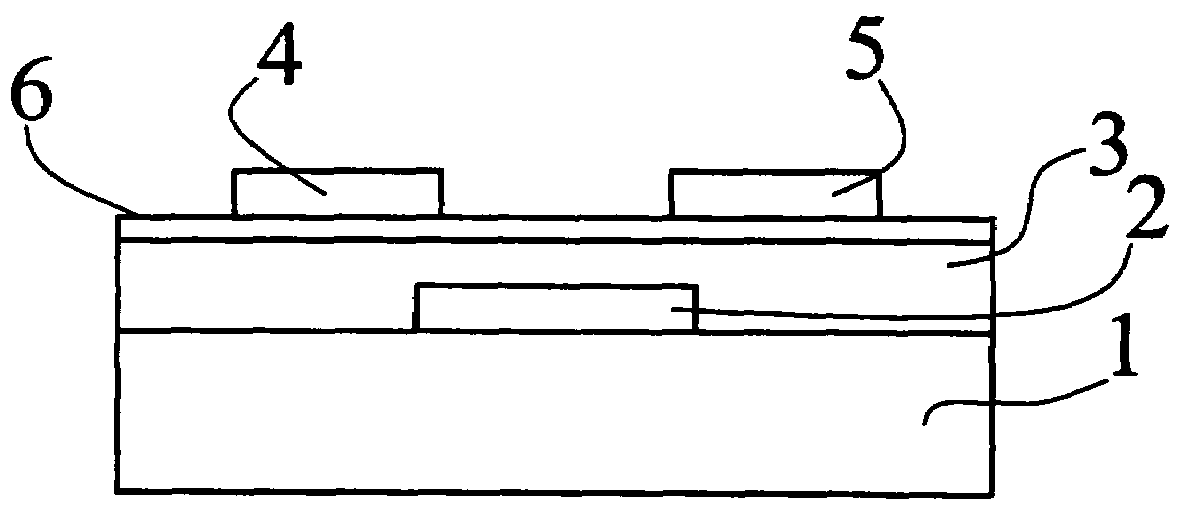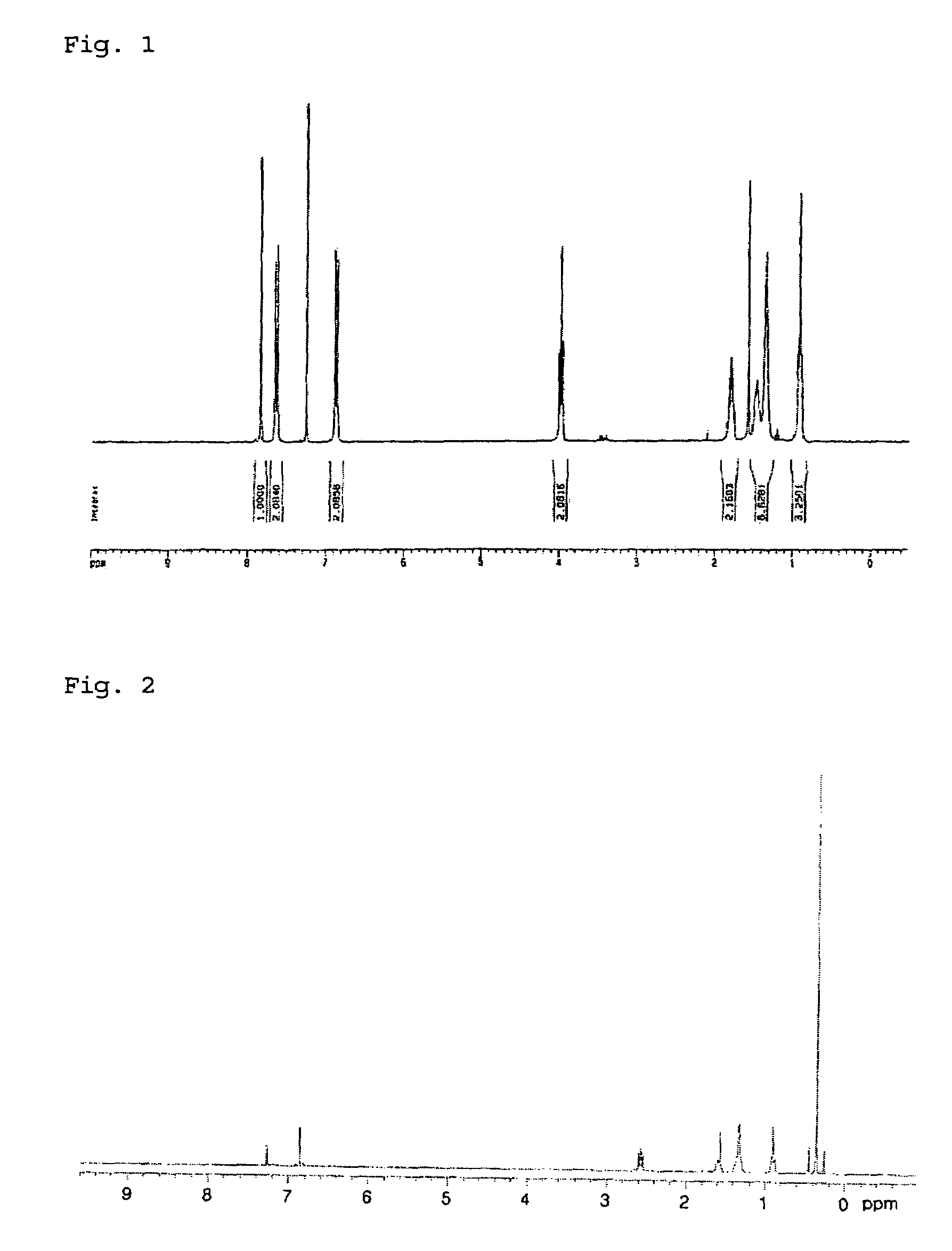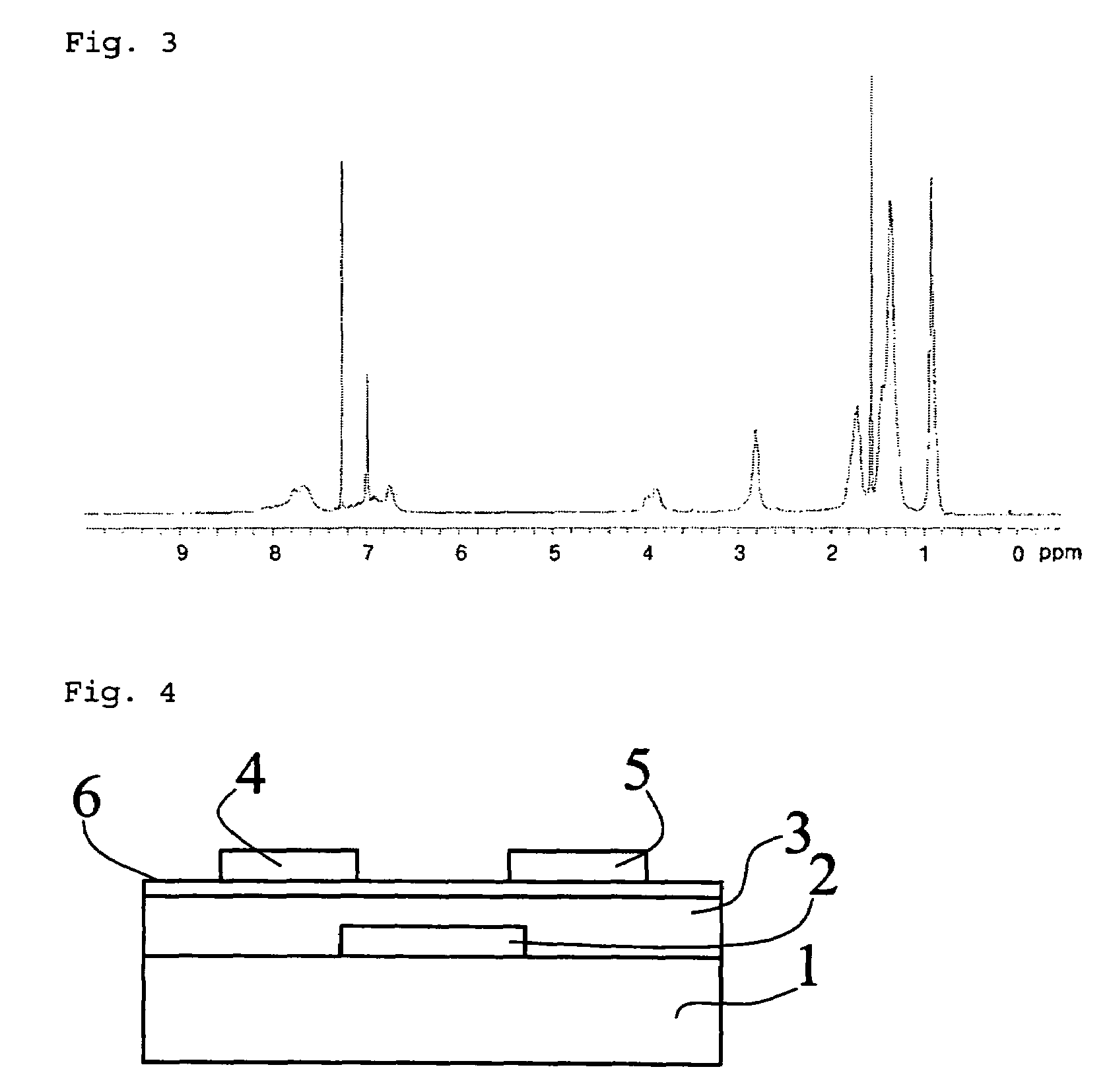Organic semiconductor polymer for organic thin film transistor containing quinoxaline ring in the backbone chain
a technology of organic semiconductors and polymers, which is applied in the direction of organic conductors, thermoelectric devices, non-metal conductors, etc., can solve the problems of not being suitable for mass-production of thin film transistor devices, and not being able to apply the polymer as an active layer of an organic thin film transistor, etc., to achieve low off-state leakage current and high charge carrier mobility
- Summary
- Abstract
- Description
- Claims
- Application Information
AI Technical Summary
Benefits of technology
Problems solved by technology
Method used
Image
Examples
example 2
PREPARATIVE EXAMPLE 2
Synthesis of 2,5-bis(trimethylstannyl)bithiophene
[0072]The title compound was prepared in a yield of 68% in the same manner as in Preparative Example 1, except that dibromobithiophene was used instead of dibromothiophene.
[0073]1H-NMR (300 MHz, CDCl3) δ (ppm) 0.38 (CH3, 18H), 7.08 (d, 2H, Thiophene-H), 7.27 (d, 2H, Thiophene-H).
example 3
PREPARATIVE EXAMPLE 3
Synthesis of 5,8-dibromoquinoxaline Derivative
[0074](1) Synthesis of 5,8-dibromoquinoxaline Derivative (a)
[0075]To a solution of 4.0 g (15.0 mmol) of 3,6-dibromo-o-phenylenediamine and 4.88 g (18.0 mmol) of 4,4′-dimethoxybenzil in 60 mL of butanol, 2˜3 drops of glacial acetic acid were added. The resulting solution was stirred at 120° C. for 5 hours. After completion of the reaction, the reaction solution was cooled to 0° C. and filtered. The filtrate was washed twice with hot ethanol, and dried to afford the title compound (yield: 64% (9.6 mmol).
[0076]1H-NMR (300 MHz, CDCl3) δ (ppm) 3.85 (s, 6H, Phenyl-O—CH3), 6.89 (d, 4H, Phenyl-H), 7.66 (d, 4H, Phenyl-H), 7.85 (d, 2H, Quinoxaline-H).
[0077](2) Synthesis of 5,8-dibromoquinoxaline Derivative (b)
[0078]4.55 g (9.1 mmol) of 5,8-dibromoquinoxaline derivative (a) prepared above and pyridine hydrochloride (Py-HCl, 40 g) in an equivalence ratio of 1:30 were charged into a round-flask. After the resulting mixture was st...
example 4
PREPARATIVE EXAMPLE 4
Synthesis of 2-bromo-3-hexyl-5-trimethylstannyl thiophene (e)
[0082]
[0083]3-hexylthiophene and N-bromosuccinimide (hereinafter, referred to as ‘NBS’) in the same amount were reacted in DMF at room temperature for 15 hours to obtain 2-bromo-3-hexylthiophene (d). 12.4 g (50 mmol) of the 2-bromo-3-hexylthiophene (d) was added to a solution of 28 mL (56 mmol) of lithium diisopropylamine (hereinafter, referred to as ‘LDA’, 2.0M in THF / Hexane) in 40 mL of anhydrous THF at about −80˜−90° C. with stirring. At this temperature, the reaction was allowed to proceed for 20˜30 minutes. A solution of 10.0 g (50 mmol) of Me3SnCl in THF was added to the mixture, and was then stirred at −50° C. for 1 hour. After completion of the reaction, the reaction mixture was extracted with ether and water. The obtained organic layer was concentrated, and distilled to afford the title compound (yield: 78%) as a colorless oil. The 1H-NMR spectrum (CDCl3) of the monomer (3) is shown in FIG. 2....
PUM
| Property | Measurement | Unit |
|---|---|---|
| temperature | aaaaa | aaaaa |
| length | aaaaa | aaaaa |
| length | aaaaa | aaaaa |
Abstract
Description
Claims
Application Information
 Login to View More
Login to View More - R&D
- Intellectual Property
- Life Sciences
- Materials
- Tech Scout
- Unparalleled Data Quality
- Higher Quality Content
- 60% Fewer Hallucinations
Browse by: Latest US Patents, China's latest patents, Technical Efficacy Thesaurus, Application Domain, Technology Topic, Popular Technical Reports.
© 2025 PatSnap. All rights reserved.Legal|Privacy policy|Modern Slavery Act Transparency Statement|Sitemap|About US| Contact US: help@patsnap.com



